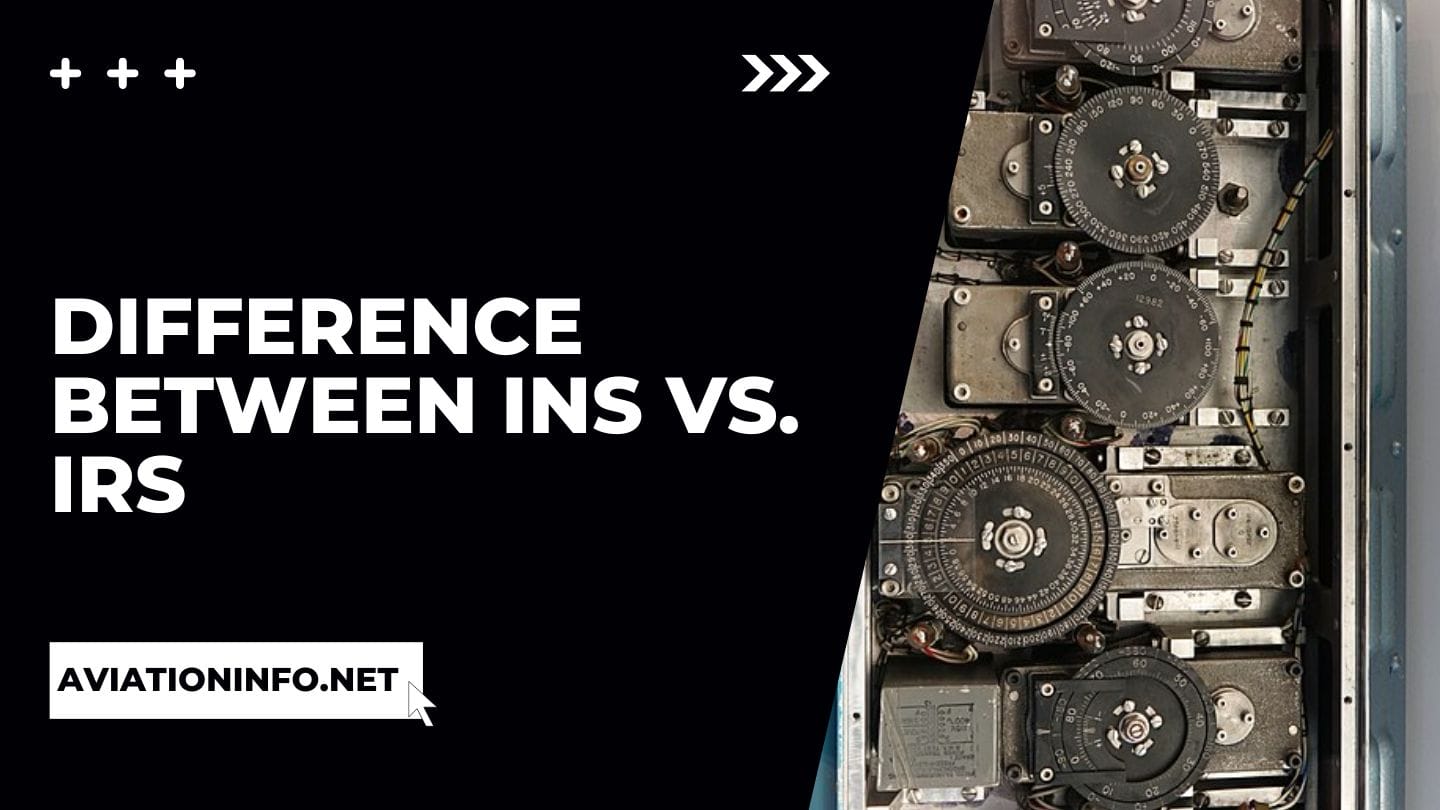Commercial aircraft navigation systems consist of processes which provide a positioning system to the aircraft. These positioning systems communicate with the onboard navigation systems. This communication allows the exact location of the aircraft to be identified.
In order to achieve accurate positioning, aircraft are equipped with Inertial Reference Systems (IRS) or Inertial Navigation Systems (INS). The exact type installed depends on the aircraft type.
IRS are the most common systems found in modern commercial aircraft. This has been implemented with the advancement in technology of the onboard Flight Management Systems (FMS).
On Boeing aircraft, these systems are known simply as IRS whilst Airbus aircraft have an ADIRS system – also known as Attitude Direction Inertial Reference System. However, these systems serve the same function.
Difference between Inertial Navigation System (INS) and Inertial Reference System(IRS)
The primary difference between INS and IRS systems is the data source used to obtain positioning information on the aircraft’s navigation system along with navigational capabilities.
On IRS systems, there is navigational capability for the “Reference” component of the system to communicate with the navigation systems onboard. This communication includes providing speed, position and heading of the aircraft to the navigation portion of the Flight Management System (FMS).
With an INS system, the above reference functionality is maintained along with the capability for data to be utilised for navigation purposes on a position to position basis. This system can provide lateral guidance independent of the FMS navigation system.
Inertial Navigation System (IRS) Alignment
During the pre-flight phase, the flight crew will follow pertinent checklists dependant on the aircraft’s state at the time. During this process, the IRS/ADIRS will be selected to the ALIGN position. Typically, an aircraft will have 2-3 switches for this function with each serving as separate inertial systems.
An exception in terminology is that on the Boeing 777/787, the IRS is called the ADIRU system – standing for Attitude Direction Inertial Reference Unit.
The IRS system can take from 5-20 minutes to align dependant on the aircraft’s co-ordinates. The flight crew can monitor the alignment time via the EICAS (Boeing) or Upper ECAM (Airbus).
During the alignment, the IRS systems are determining the earth’s rotation relative to the aircraft in a stationary position. It is important that the aircraft remains stationary during the alignment process as any movement will require the alignment cycle to be repeated.
Can IRS be aligned in the Air?
IRS systems require gravity to fully align. This means the aircraft must be on the ground and stationary in order for the IRS to align completely. This can be verified via the Weight on Wheels (WOW) system. While a full IRS alignment cannot be completed in the air, limited components can be aligned utilizing a separate mode known as ATT.
ATT mode enables attitude and heading indications to be provided via the IRS in-flight. Once aligned in ATT mode, these indications are made available.
Modern commercial aircraft use multiple data sources to get updated, continuous positioning. Therefore, failure of the IRS system in-flight is not deemed to be a complete loss of navigation systems.
Why does IRS Take so Long to Align?
As discussed above, the IRS takes between several minutes and 20 minutes to align. There are a number of factors which determine the alignment time for an aircraft:
Position
The position of the aircraft in co-ordinates will affect the alignment time. This is due to the system determining the aircraft’s position relative to the earth’s rotation. The further from the equator, the longer the alignment time will be. This is due to the difference in the earth’s rotation at different locations around the globe. The earth’s rotation is faster the closer the equator is and therefore alignment time will be shorter.
Gravity
IRS alignment is gravity based, in the sense that the aircraft is required to be on the ground in order to be fully aligned. It must also be stationary during the alignment process.
Processing Time
Dependant on the exact IRS systems installed on the aircraft, the receivers will obtain positional data at different speeds. The processing time has typically been shortened with the advancement in technology.
During the initial alignment, the IRS systems are calibrated and cycled. This also involves the systems determining the position of the aircraft’s co-ordinates in relation to the equator.
Read More:
Airport Mapping Database (AMDB) – Functions and Features
Noise Abatement | Aviation Glossary

After visiting more than 60 countries, I have probably been on every type of plane there is and visited countless airports. I did my very first international solo trip to South Africa at the age of only 16 and haven’t really stopped traveling since.
Despite the adventurous travel itch, I do have a nerdy side as well – which is satisfied by writing about all things aviation “too boring” for my regular travel blog.
